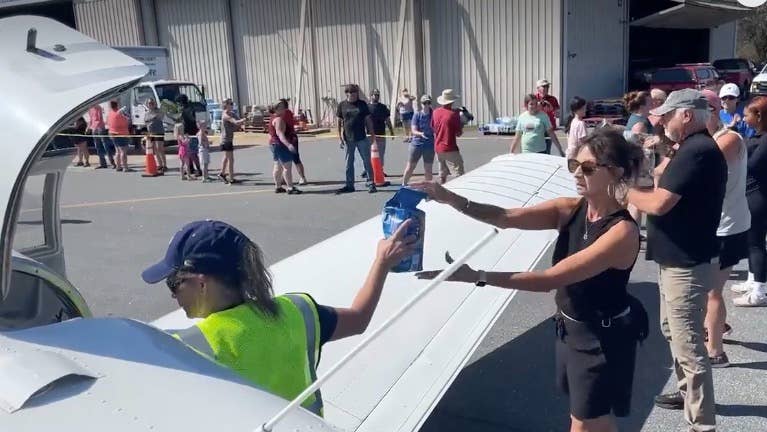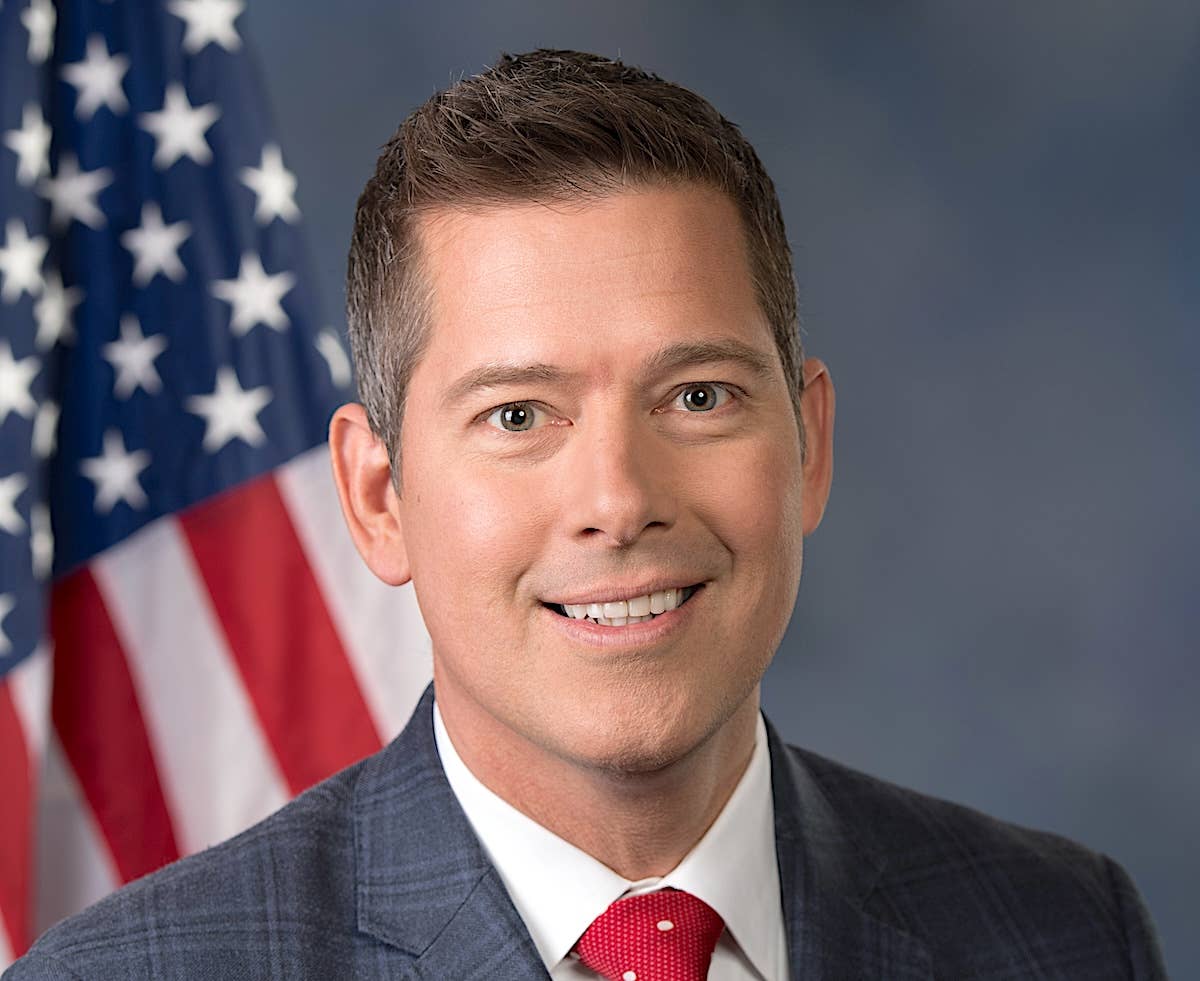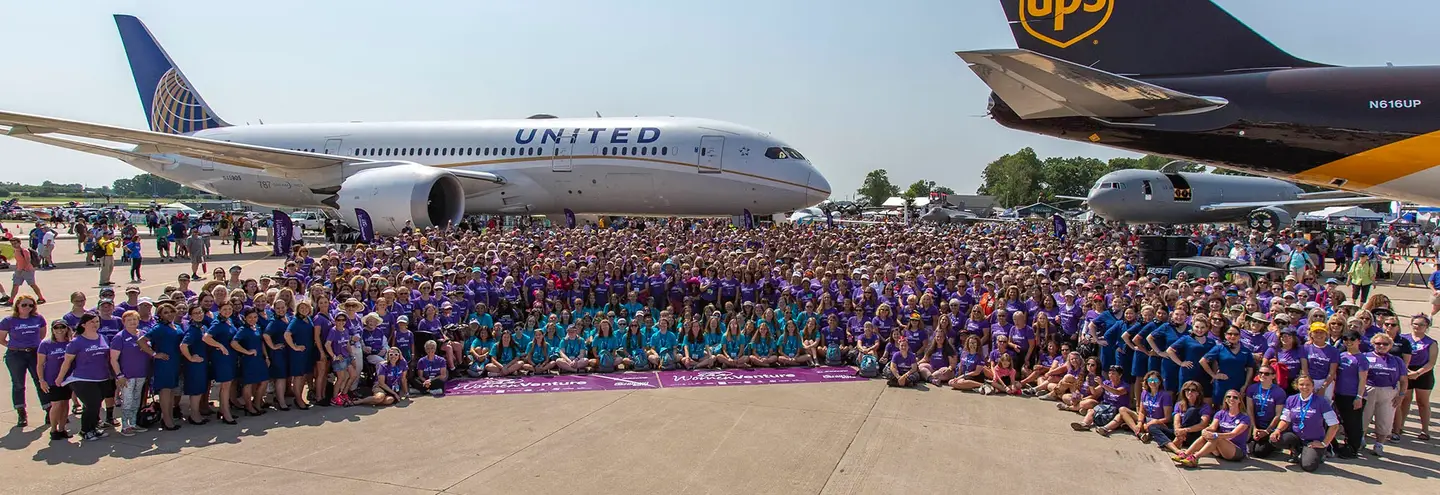Pitching In On The Airlift: A First Timer’s Account
A well-organized volunteer effort supported the airlift for Helene victims.

Screenshot
“It just keeps going,” the lady said as she reached into the baggage area of the Mooney. “How did you get this all to fit?” I smiled and started to brag about being part of the Tetris generation, but then I realized she probably said that to every pilot who flew supplies in.
Standing on the ramp at Rutherford County Airport in rural North Carolina, I was far from alone. A long line of general aviation birds waited their turn to unload. A Bonanza was in front of me, and to the rear were a Baron, a Saratoga, a Cessna 185 on floats and another Baron, each piled almost to the ceiling with aid supplies. I wondered how different the numbers in our heads would be from those on the scales if anyone had the nerve to actually weigh in.
Winging toward the disaster zone, I’d kept thinking of how things might play out. It was my first time participating in such an operation. In the driver’s seat of my Mooney, I was hemmed in by so many relief supplies that I had to plan my entry and exit to clamber over the pile of things strapped into the front seat and wedged into the footwell to my right. In the back seat and baggage area, boxes and bags bulged with people food, dog food, cat food, socks, gloves, tarps, toilet paper, diapers, butt wipes, bleach wipes … the list just kept going. I’d weighed out 205 pounds of goods before a few last-minute additions—the Mooney could haul that weight and then some, but space quickly became the limiting factor. In my mind, I knew that other airplanes had more capacity—my friend Kim and her husband Nick had just flown a few missions in their DeHavilland Beaver, and a trio of C-47s had made runs to some of the communities in need. The Beaver hauled almost ten times as much weight as I had aboard; the Gooney Birds could haul more than twice as much as the Beaver. But still, I wanted to be a part of the effort.
As I neared the disaster area, the common air-air frequency assigned to the search and rescue zone crackled nonstop with position reports as rescue crews and supply helicopters coordinated. I’m fairly sure the sky was also infested with drones. My head never stopped moving in the search for the next collision threat, and then I noticed a different sort of crackle on the radio. The sort of crackle that sounded like a stuck microphone.
And it was my breathing being broadcast, filling the common frequency for an area that had swarms of aircraft coming from all directions. I reached up and spun the transmit selector from the comm radio to Intercom, so that I was only transmitting to myself, and then I made the audible call to change up the play. Instead of proceeding to the supply base where my load of goods would be unloaded, categorized and split across other flights before they loaded me up with an assigned destination, I looked at the map. I’d filed IFR to Rutherford County because it was the closest to my home airport, and I figured that going IFR through the search and rescue zone wasn’t the greatest idea. I pulled the power back and entered the pattern, catching a gap in the flow.
I figured it was the rinky-dink push-to-talk plugged into my intercom that had failed, and I keep spares. I went ahead and landed at Rutherford, where I changed out the PTT with zero change to my situation.
Just then, my number came up for unloading. The line of volunteers queued up at my cargo door and a lady reached in, grabbing the first box and handing it to the volunteer behind her. Operating the same as a bucket brigade, each donated item passed through countless hands as it traveled to a waiting truck. As the volunteers emptied my airplane, my hopes of sticking around for a few days of missions faded. Continuing to operate in this challenging environment with janky communications wasn’t the greatest idea to begin with, and as I studied the ramp it was apparent that my Mooney was outclassed in terms of payload, and there was certainly no shortage of pilots participating. I’d pictured a sleepy operation with an airplane drifting through occasionally, and this was anything but a sleepy operation.
I climbed onto the wing to hand out a few boxes of trash bags and a bag of snacks that’d ridden up front with me, and the lady who led the unloading announced that unloading was complete. What came next, I didn’t expect.
The whole group of volunteers stopped what they were doing. They clapped and cheered. A little misty substance appeared at the corners of my eyes, and then I dragged the Mooney clear of the unloading zone for one last effort at fixing my radio problem. A few volunteers stopped by, again thanking me for participating, before I fired up for a quiet flight back home.
As I write, the airlift effort is nearing an end. Roads are opening up, and by the time you read this, Operation Airdrop plans to be moving away from any fixed-wing operations as vehicles can now bring supplies to pickup spots where helicopters can cover the final miles delivering to the folks still cut off. Several critics have posted that bigger airplanes were the proper tool for an airlift, and if these communities had runways to support the quad-jet cargo birds, that’d be all well and good. The DC-3s and Beavers hauled a lot, but there aren’t a whole lot of airplanes capable of that sort of lift in private hands, much less owned by the sorts of people who would send their birds to a disaster zone.
While the emotional response is to keep the airlift going until all affected by the storm have been helped, knowing when to pivot is what makes these organizations successful. Roads are opening up and the giant swathes of land cut off from civilization are becoming smaller tracts, and going forward beyond the next few days, the emphasis will be on helicopters. There’s still a solid need for volunteers, though. Those trucks don’t unload themselves; nor do the supplies just jump into the waiting choppers.
While my plan for a solid couple days of flying didn’t work out, I did get one load of supplies delivered, and I have a much better idea of how it works when the next opportunity comes along. I’ll be ready, next time.






